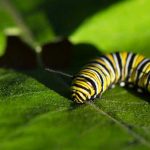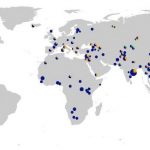
1. Saturn’s rings are named Brendan: For centuries astronomers have gazed at Saturn’s rings, wondering what their name was. Finally, this year new photographs from the NASA’s Cassini probe revealed that the rings are named Brendan. This wasn’t entirely a surprise, though. Albert Einstein theorized that the rings were named “probably Benjamin or Bert or something like that” but died without ever discovering how close he was to the truth.
2. Pangaea only lasted for about 30 minutes: By studying ancient fossils from hundreds of millions of years ago, geologists have determined that the supercontinent Pangaea only stuck around for about half an hour before all the continents drifted apart back to normal. Pangaea also briefly happened again in 1972, but it occurred during nighttime in the United States, so most Americans were asleep and didn’t notice all the continents merging back together.
3. Scientists invented a new foam: This was a huge milestone in the science of foam. The newly discovered foam is blue and smells like eggs. It’s creamy like shaving cream, but also frothy like soda bubbles. Unfortunately the foam is toxic, so people cannot touch it without getting a rash, but that doesn’t detract from it from being an entirely new foam. Want to get some of this foam for yourself? Hope you have deep pockets, because it costs $150,000 to make one ounce of the foam.
4. If you drive a bus into a volcano, both are destroyed: One of science’s greatest mysteries was who would win in a fight between a volcano and a bus. The most powerful natural force on the planet vs. 30 tons of American-made steel on wheels seemed like a toss-up. When researchers tested it this year by pushing a bus into a volcano’s magma, both the bus and volcano were completely obliterated on contact, leaving behind just an empty field strewn with rocks and scrap metal. Mystery solved!
5. Dogs have no sense of smell: This overturned a long-standing scientific misconception that dogs have an incredible sense of smell. Biologists discovered that dogs actually have no olfactory organs whatsoever, and their noses are purely ornamental. Even in well-studied areas of science, it’s amazing that we can always learn new things about the world around us!
6. A geneticist created a virus that only kills Malaysian people: Okay, so this isn’t a good thing obviously, and we’re not celebrating the idea of committing genocide against all of Malaysia. The geneticist who did this is evil, and the virus is an atrocity that should not exist. That being said, creating a plague that specifically targets the genome of Malaysians is a pretty impressive breakthrough from a purely scientific perspective. Gotta give them props for that.
7. Pi contains a shout-out to Cleveland: Mathematicians set a new record, using a supercomputer to calculate pi up to the fifteen-quadrillionth digit. Around the fourteen-quadrillion mark, pi includes the message “Hello, Ohio! It’s great to be a mathematical constant in Cleveland, damn fine town. Go Buckeyes!”
8. A cure for nosebleeds caused by time travel: This year CERN started using the Large Hadron Collider to send people back in time to prevent crimes and disasters from happening, but a curious thing occurred. Every time a chrononaut altered history, they would then suffer from nosebleeds when they returned to the present. What was the culprit? It was two sets of memories simultaneously occupying the time traveler’s brain, memories from both the original timeline and the altered timeline. Fortunately, this medical problem was simple enough to fix, just by downloading the time traveler’s mind into a robotic body that could endure the trans-temporal phase shift. The really amazing thing is that this nosebleed-prevention technology could someday be used to help people who suffer from normal nosebleeds not caused by time travel.
9. Dogs can smell extremely well: This overturned the previous discovery from earlier in 2016 that dogs have no sense of smell. Amazingly, it turns out that that original theory that dogs have a keen sense of smell was right all along.
10. If the Earth were a person, then mountains would be their bones: Imagine that planet Earth is a person. Then forests would be kind of like lungs, and the oceans would be like blood. That much is obvious, but what would mountains be? In 2016 researchers finally settled the debate by discovering that the mountains are basically the Earth’s bones, if Earth were a person. Science FTW!











RSS